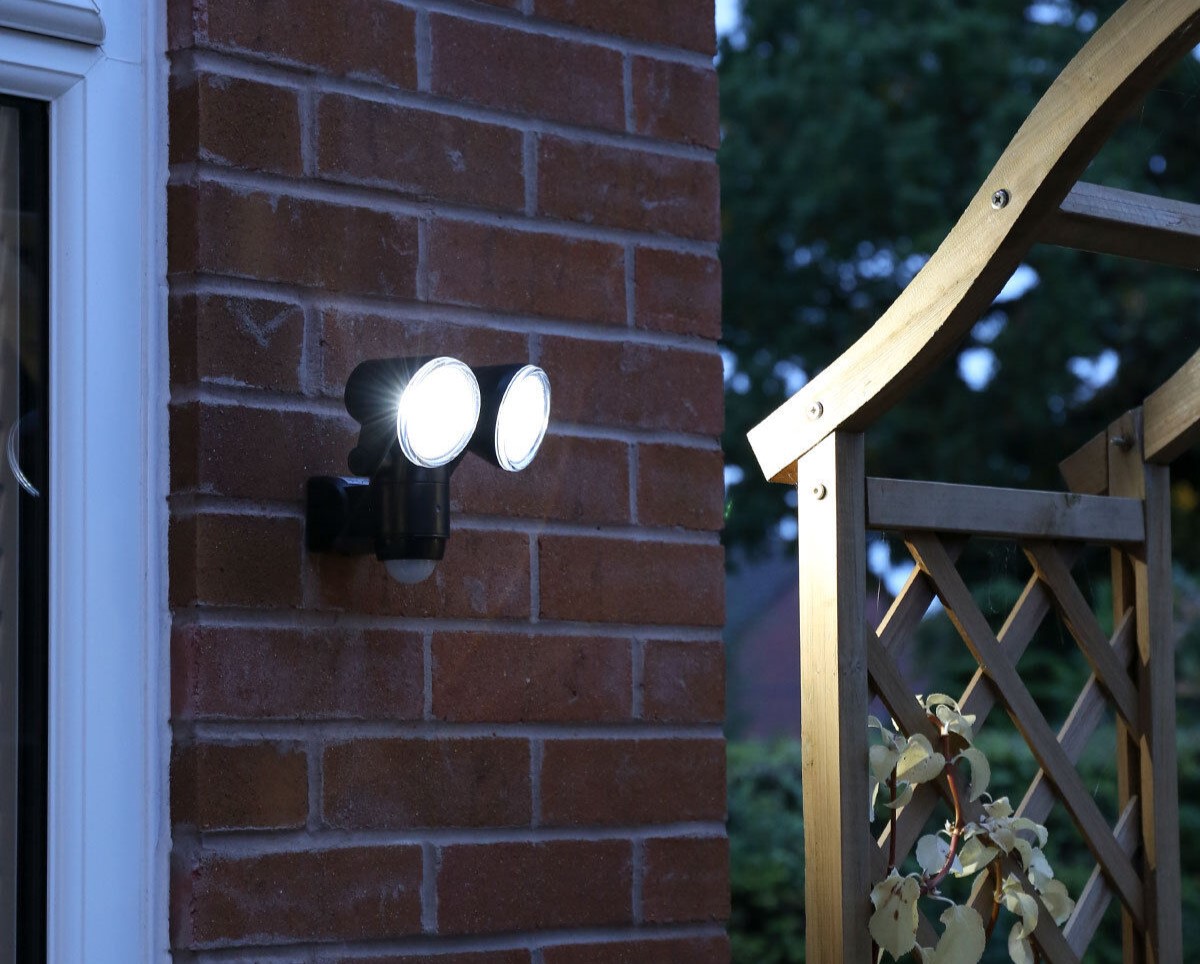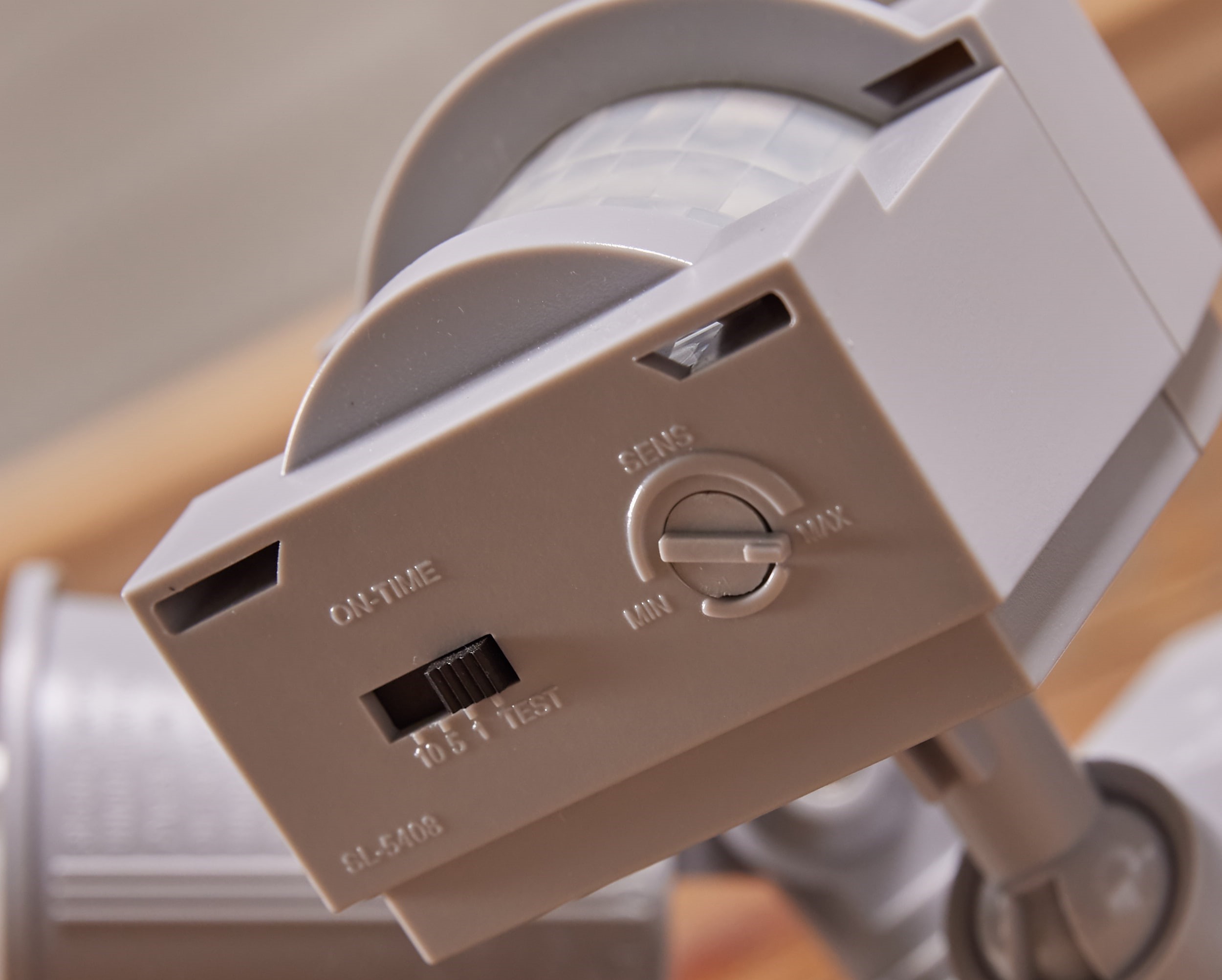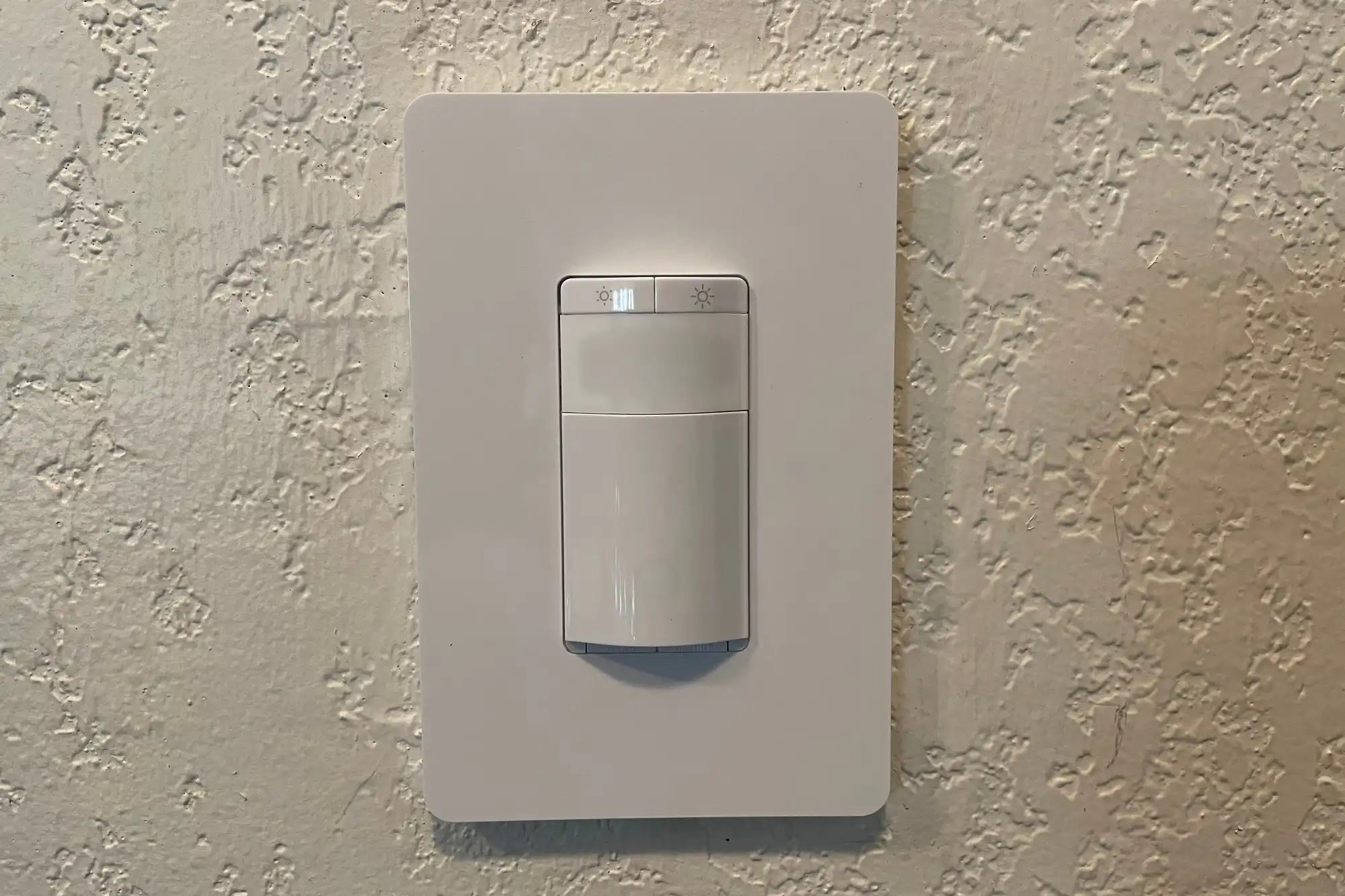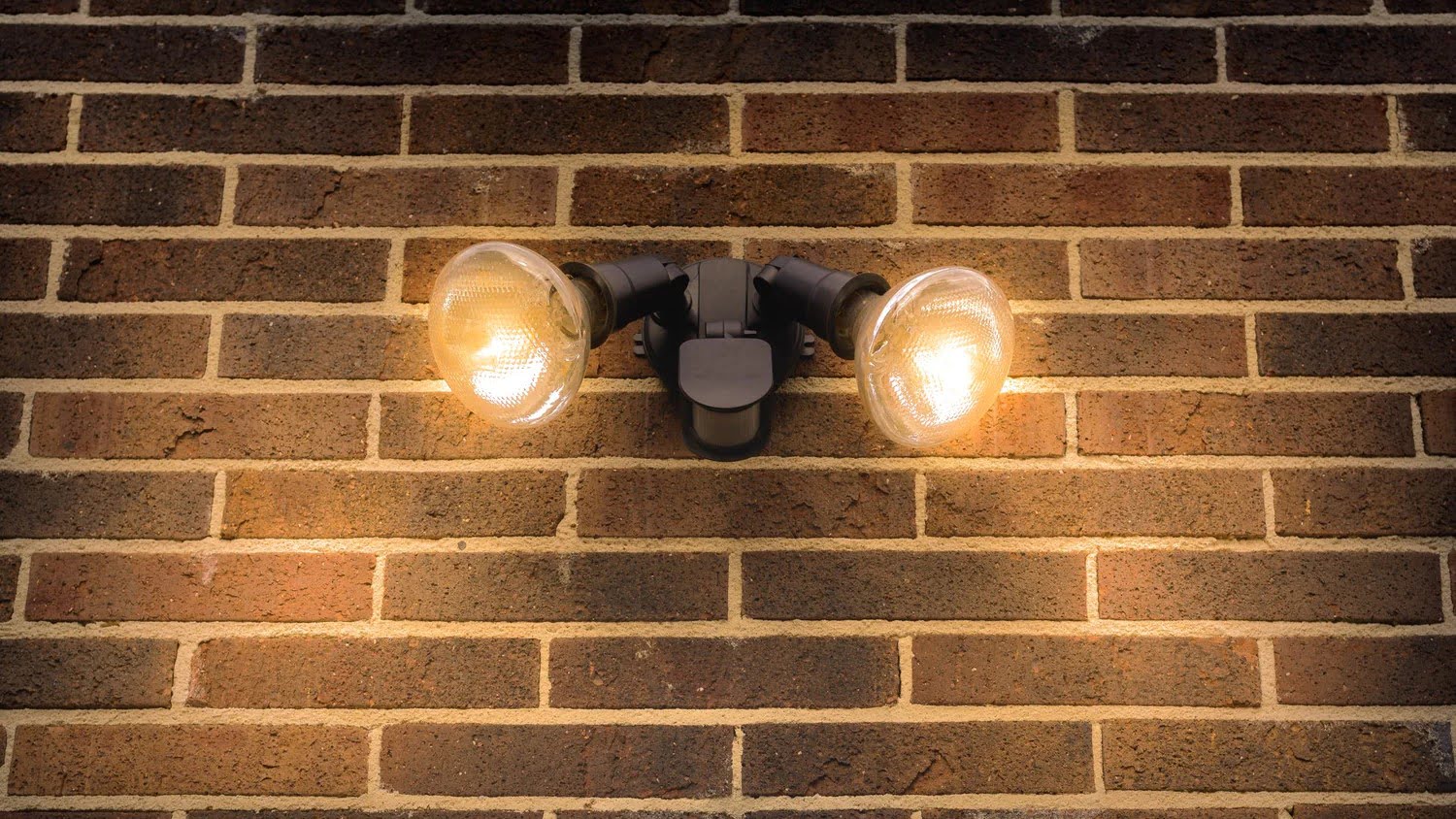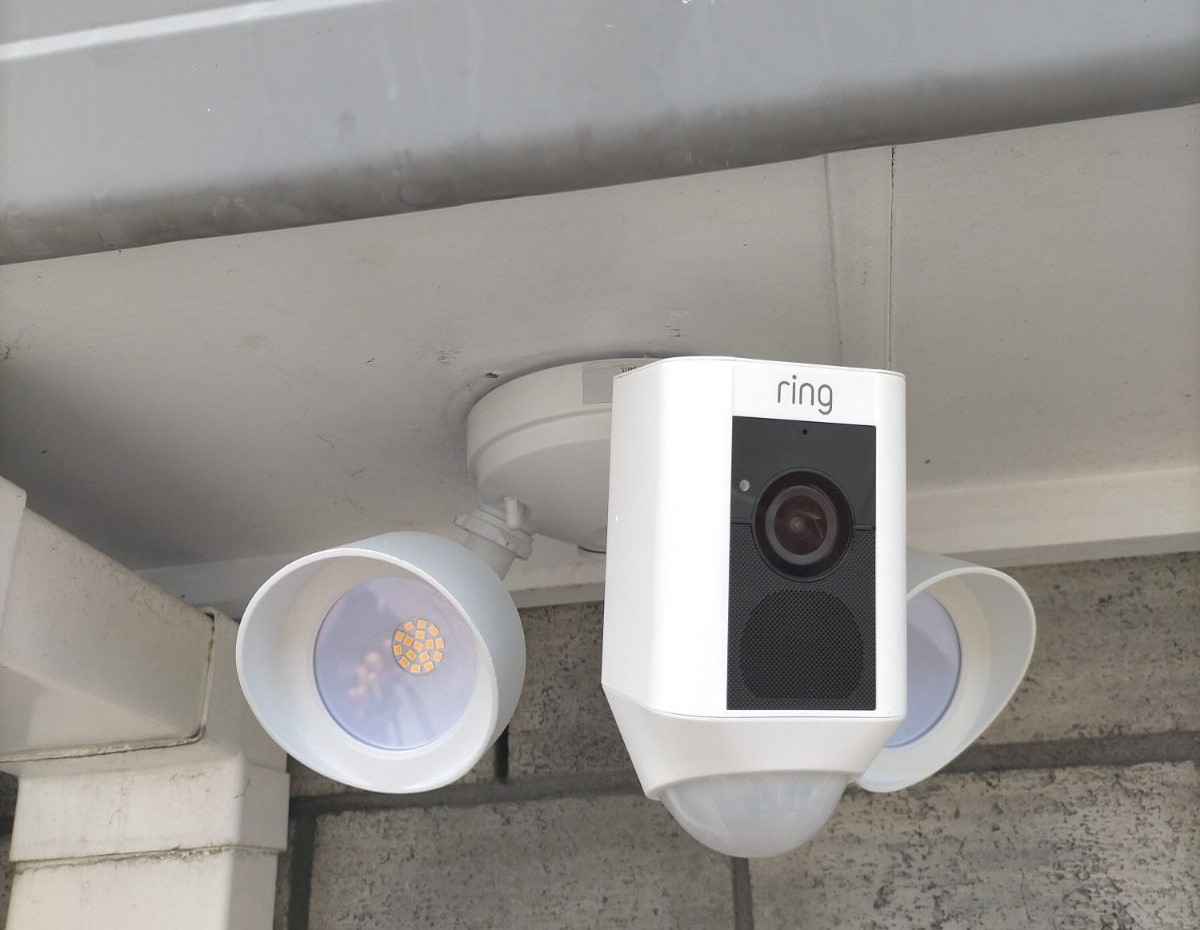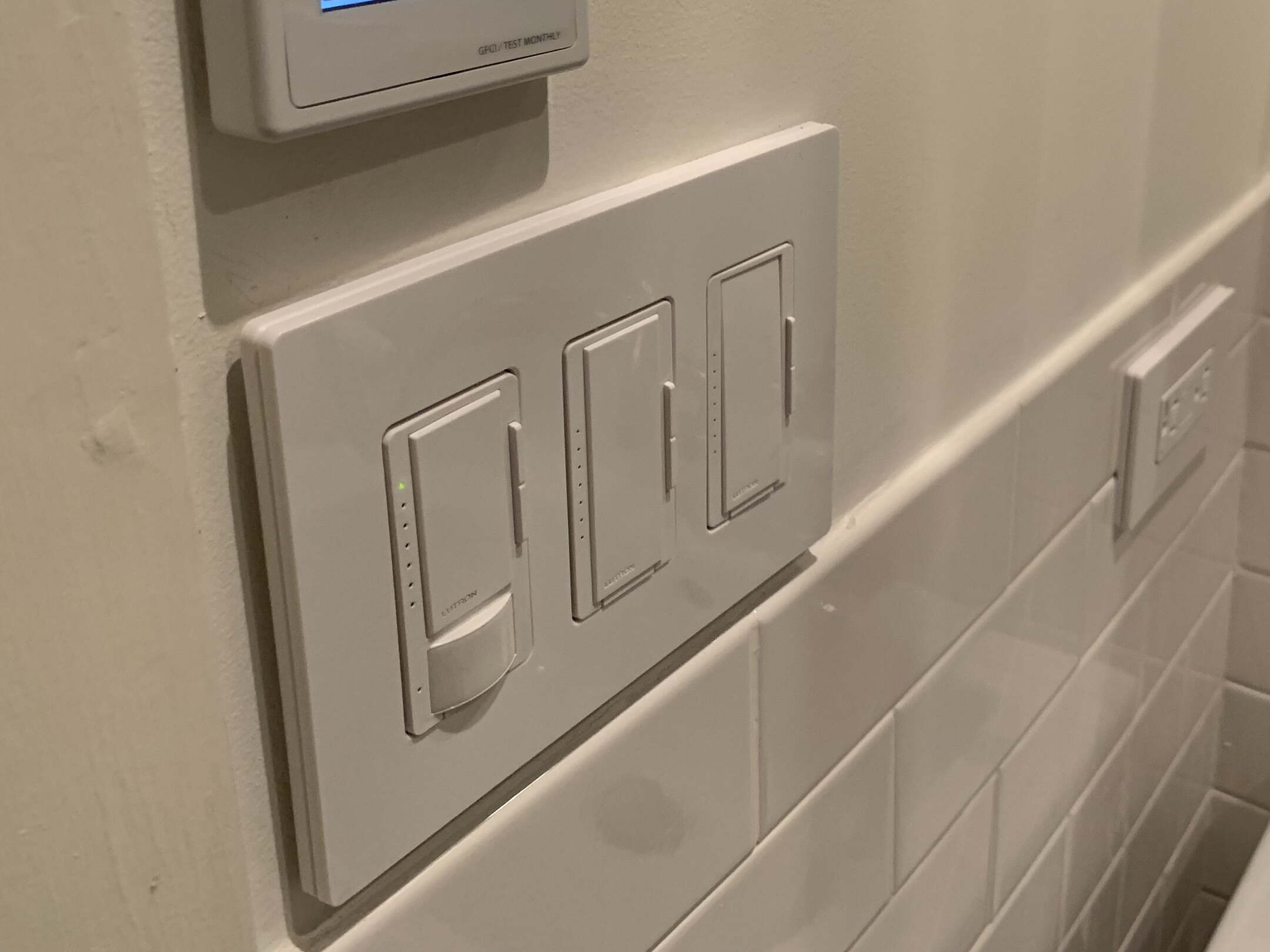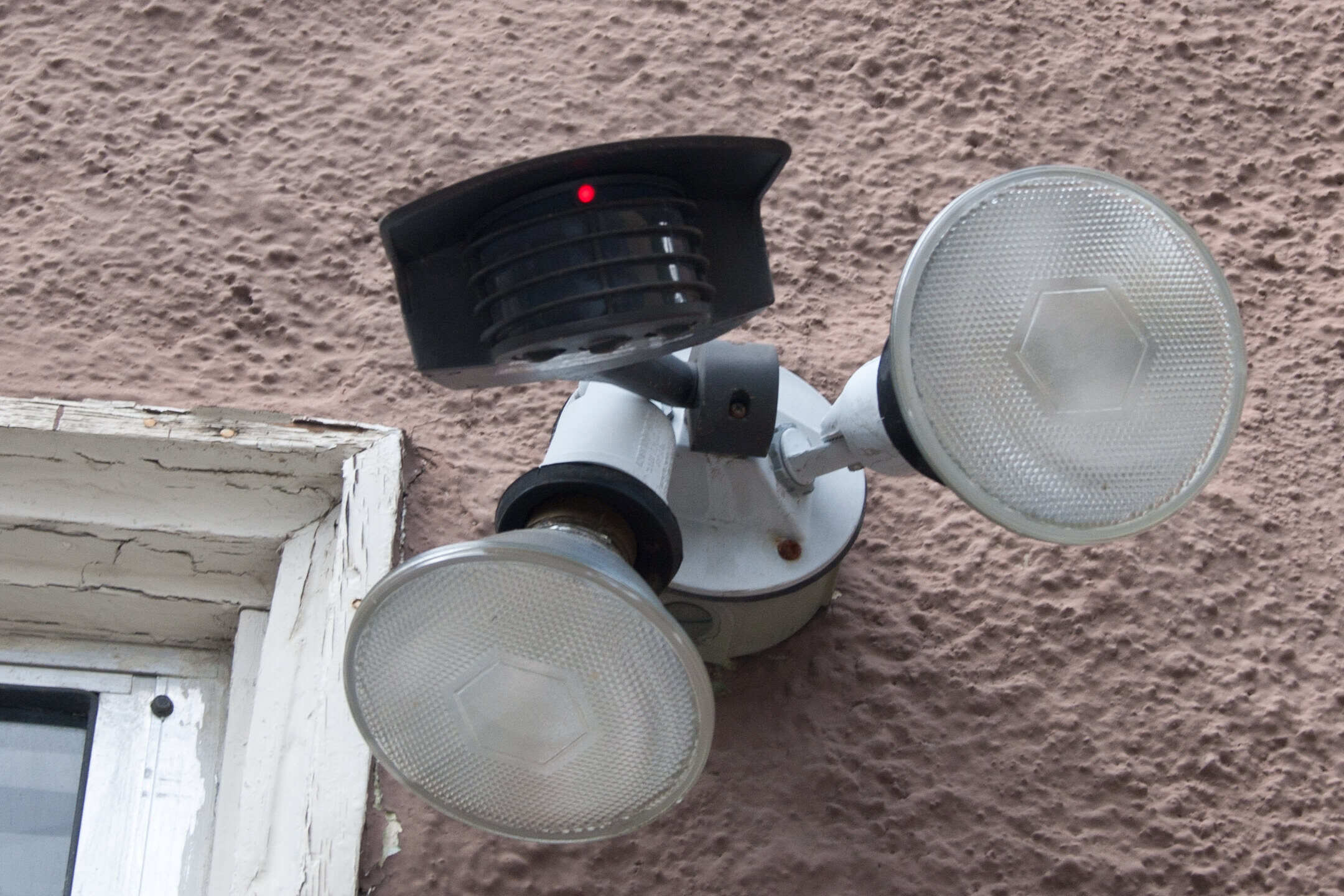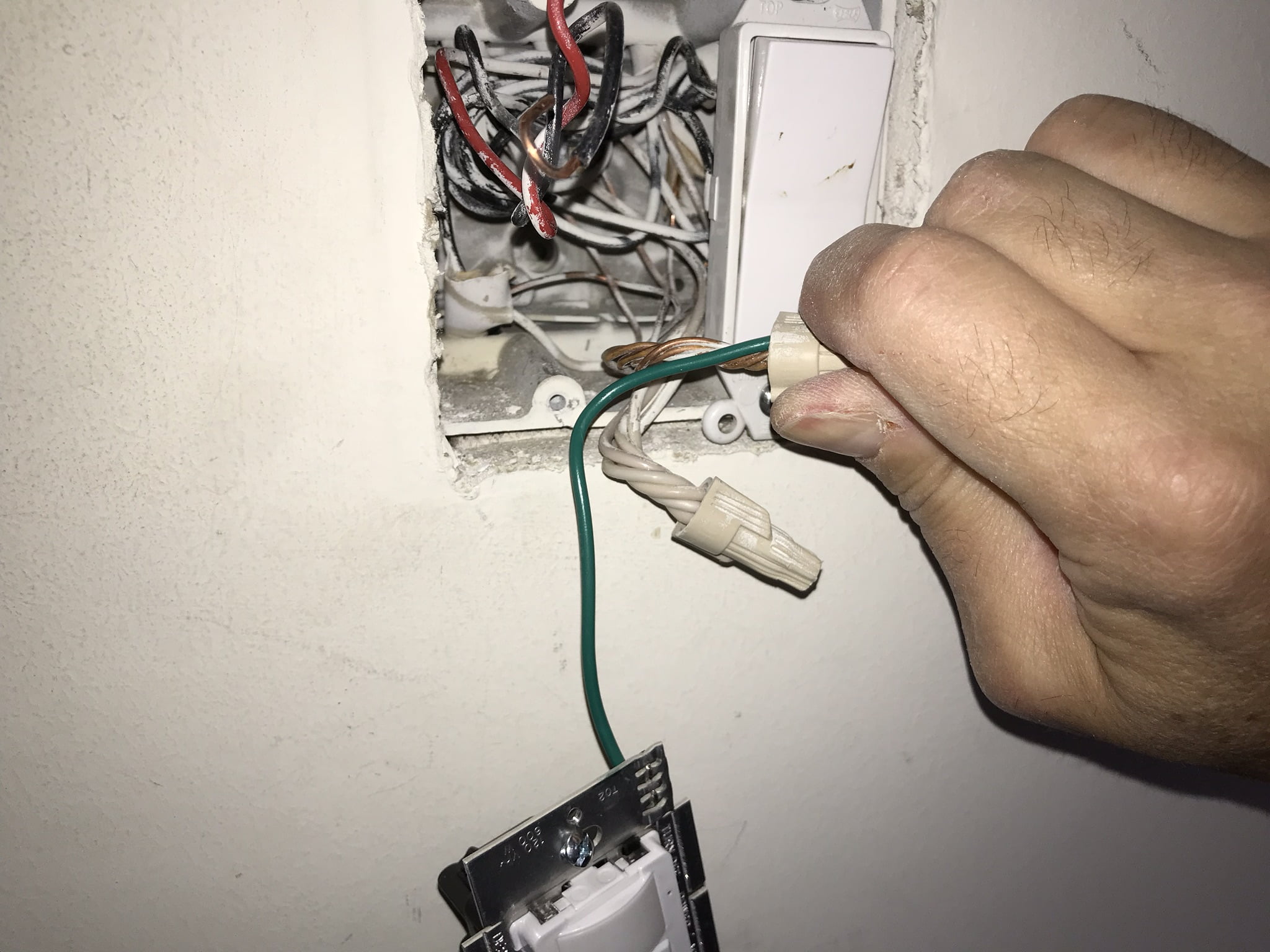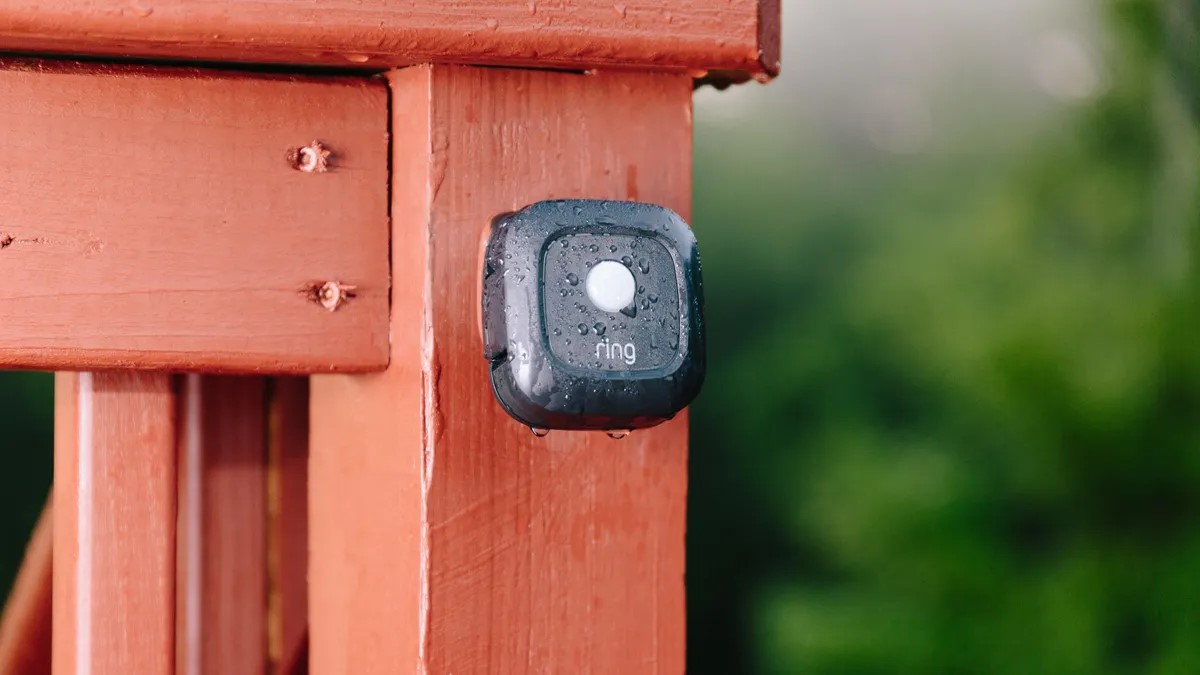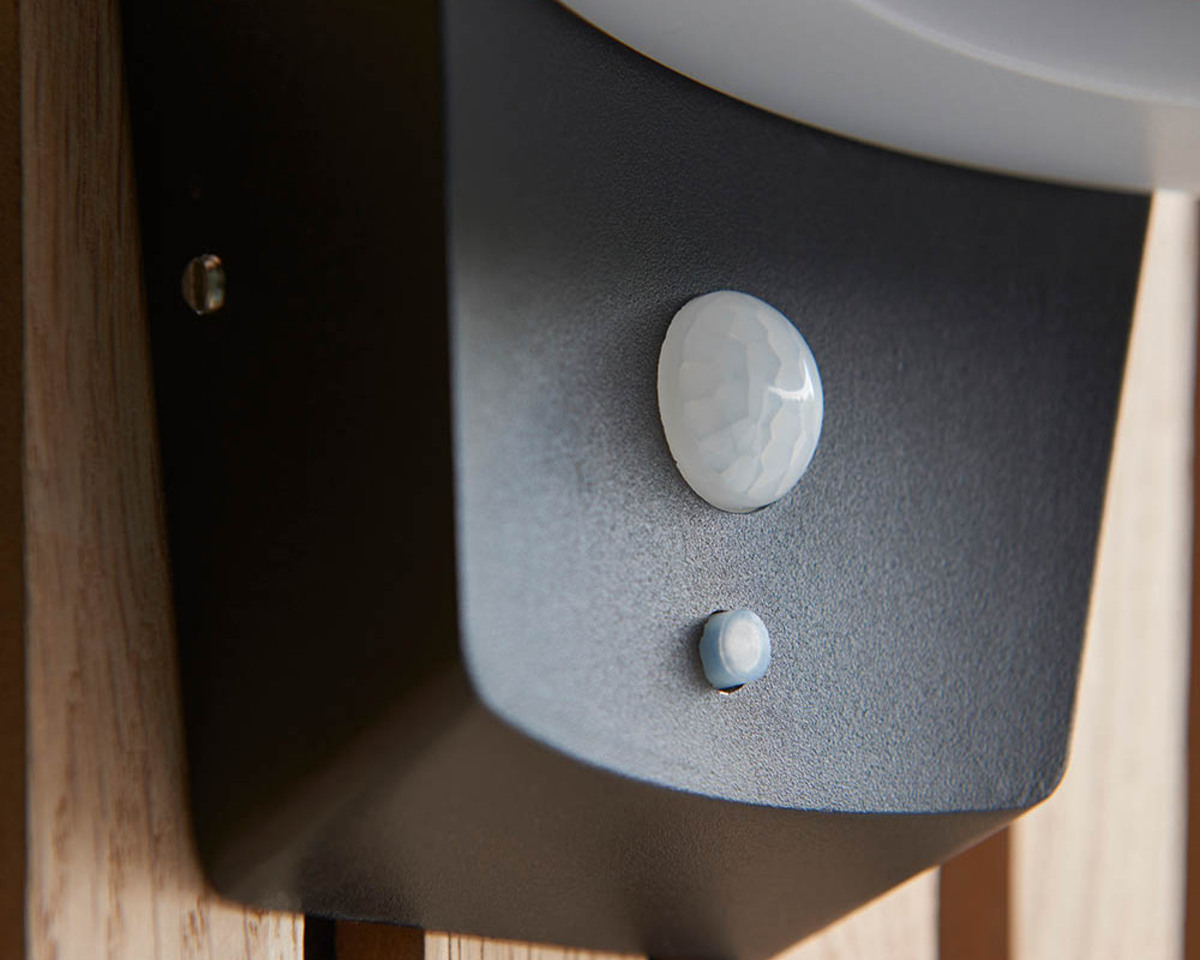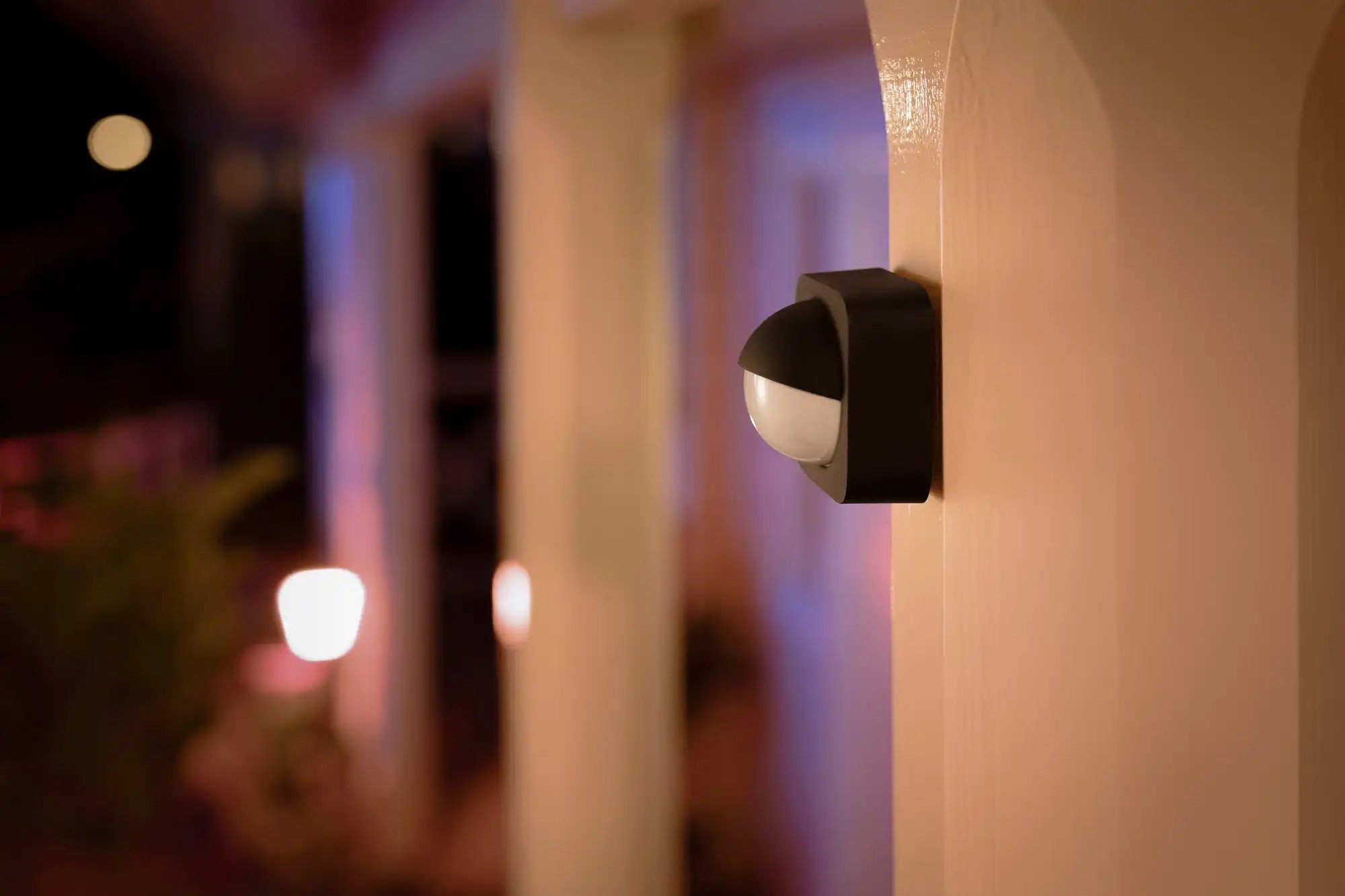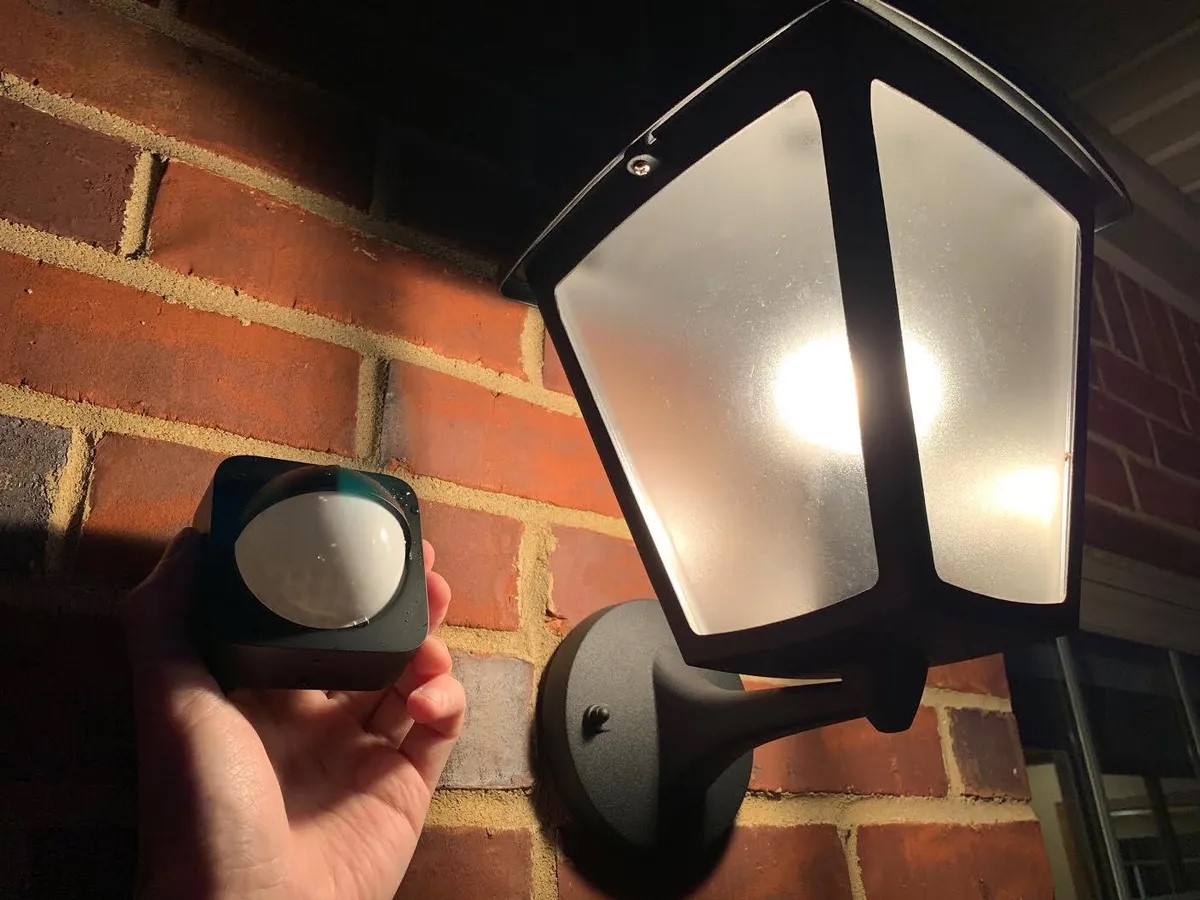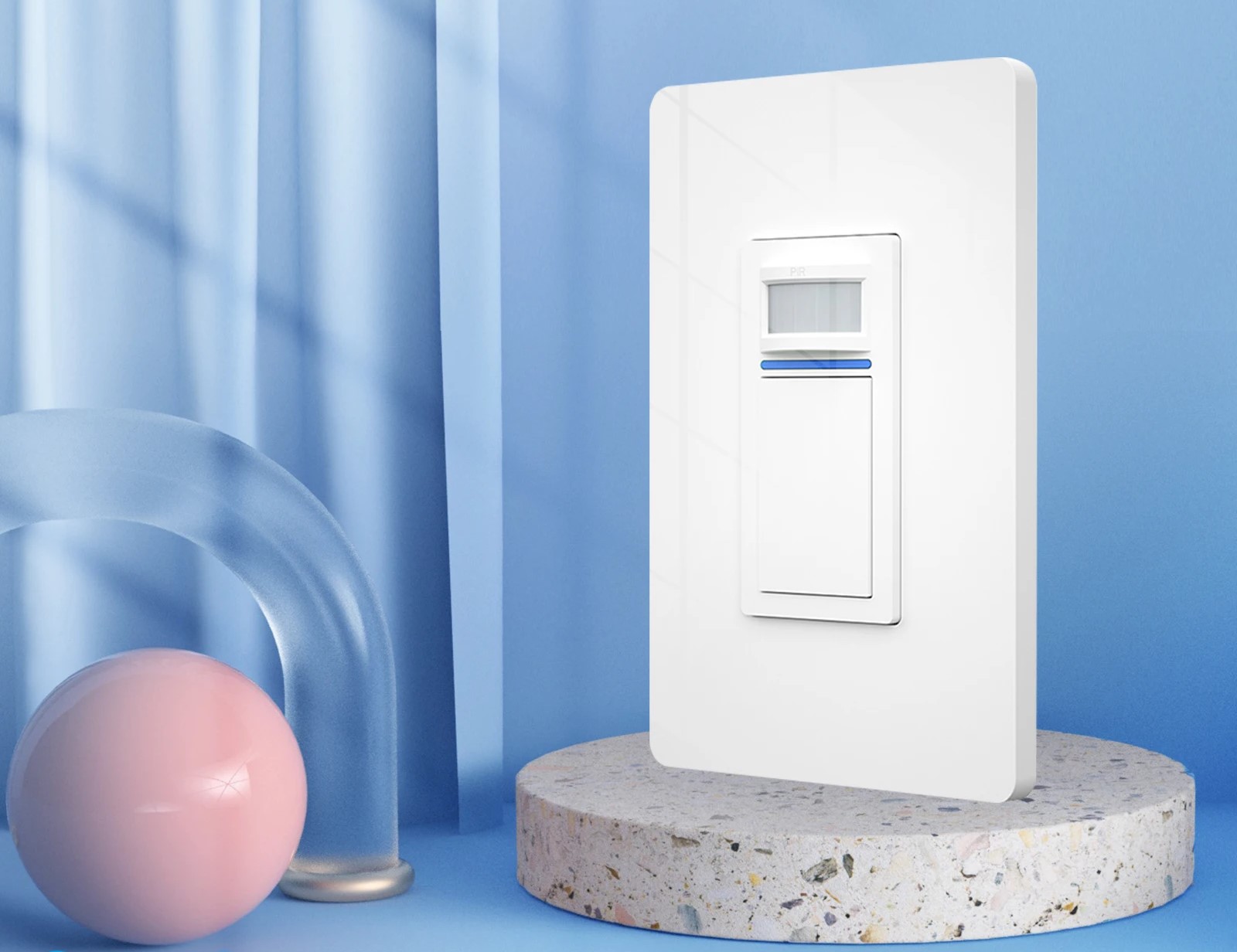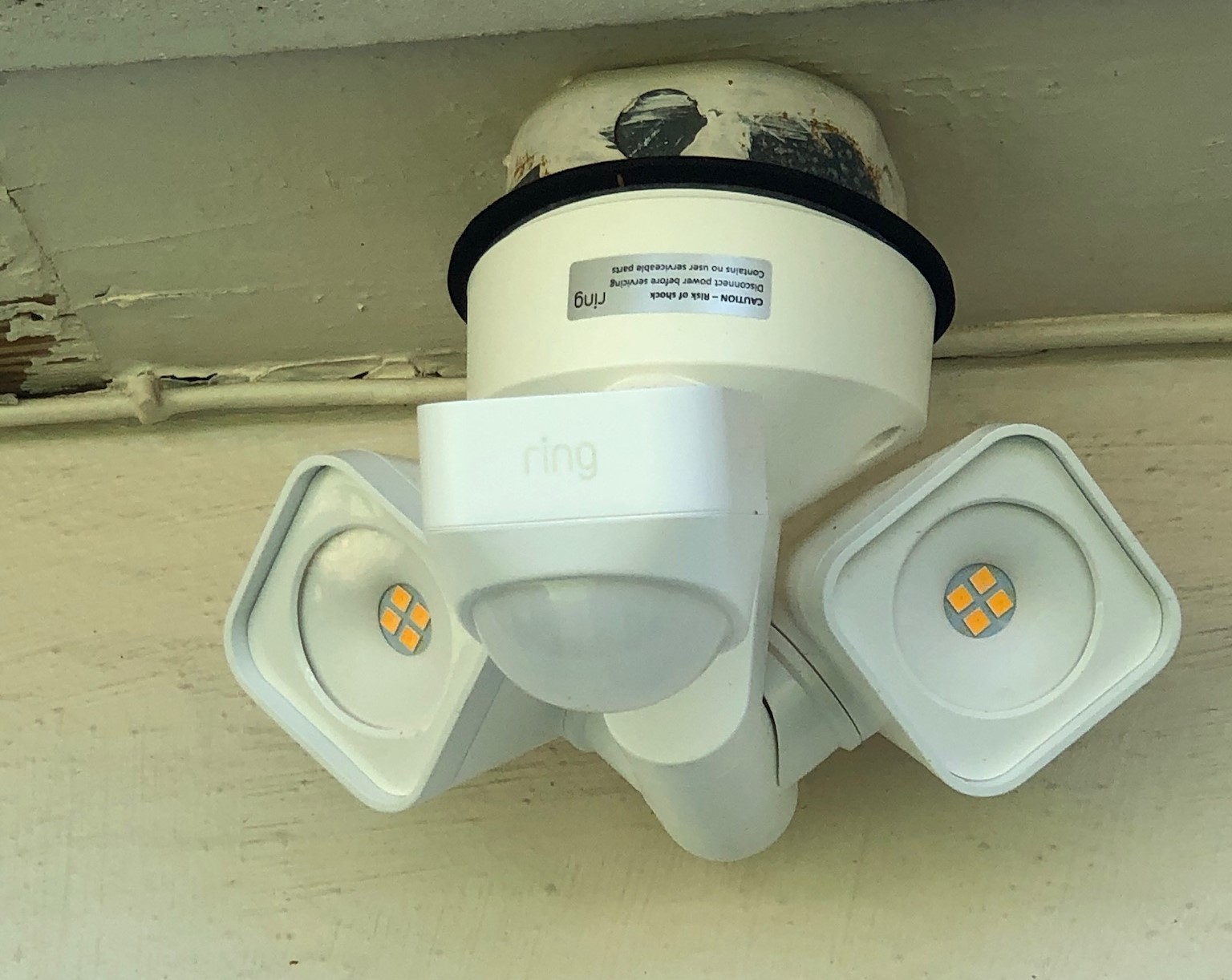Home>Home Security and Surveillance>How Do Motion Detector Lights Operate
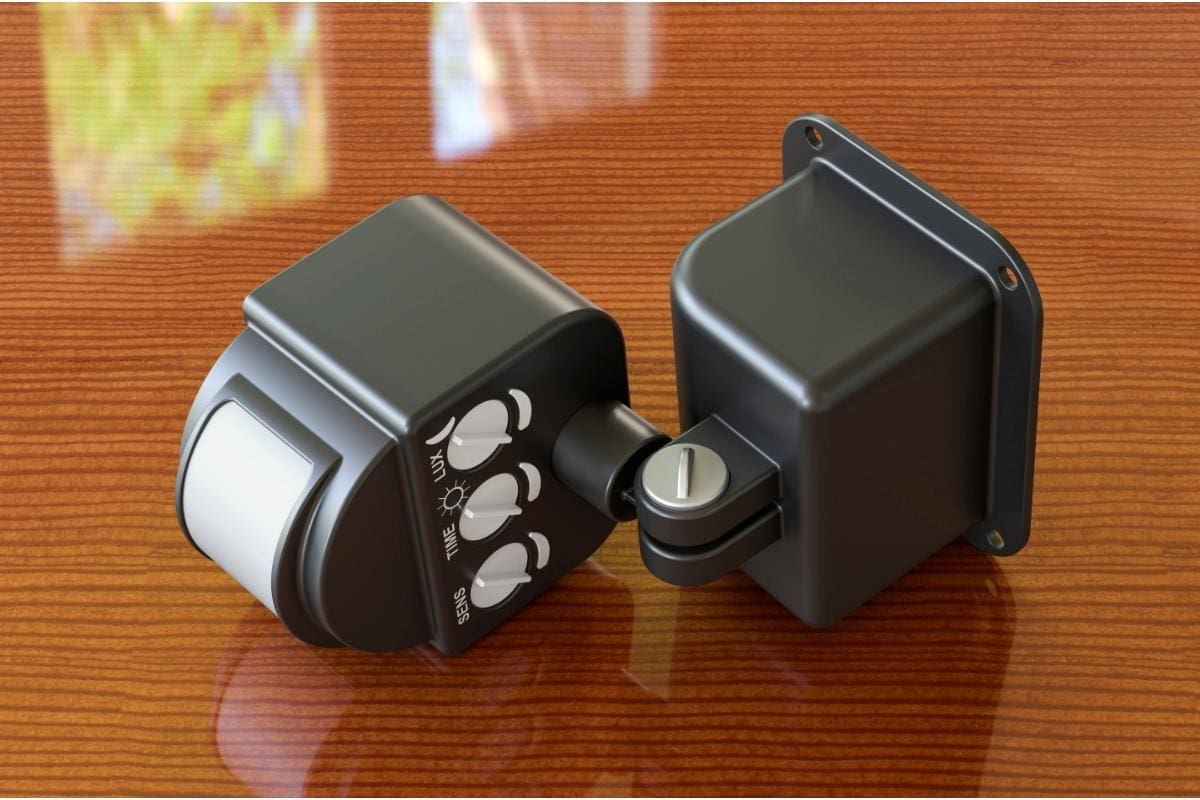

Home Security and Surveillance
How Do Motion Detector Lights Operate
Modified: March 6, 2024
Discover how motion detector lights enhance your home security and surveillance by detecting movement and illuminating your surroundings.
(Many of the links in this article redirect to a specific reviewed product. Your purchase of these products through affiliate links helps to generate commission for Storables.com, at no extra cost. Learn more)
Introduction
Welcome to the world of home security and surveillance! In today’s fast-paced and ever-changing society, it is essential to prioritize the safety and protection of our homes and loved ones. One of the most effective ways to achieve this is by installing motion detector lights.
Motion detector lights are an innovative solution that combines convenience and security. These lights are designed to automatically turn on when they detect movement within their range. Whether you want to deter potential intruders or simply have an extra layer of security, motion detector lights are a wise investment.
This article will provide an in-depth overview of how motion detector lights operate, the different types of motion detection technologies available, the components of these lights, the installation process, and tips for adjusting settings, troubleshooting common issues, and maintenance. By the end of this article, you will have a better understanding of motion detector lights and how they can enhance your home security.
So, let’s dive in and discover the fascinating world of motion detector lights!
Key Takeaways:
- Motion detector lights use sensors to detect movement and instantly illuminate, providing security and convenience. They can be adjusted to prevent false triggers and conserve energy, enhancing home safety.
- Understanding the components, installation process, and maintenance of motion detector lights is crucial for optimal performance. Regular testing, troubleshooting, and adjustments ensure reliable home security.
Read more: How Do Motion Detector Cameras Operate
Working Principle of Motion Detector Lights
The working principle of motion detector lights involves a combination of sensors, electronics, and light bulbs. These lights are designed to detect motion using various technologies and instantly illuminate an area, providing both security and convenience.
The most common type of motion detection technology used in motion detector lights is passive infrared (PIR) sensors. PIR sensors detect changes in infrared radiation, which is emitted by all objects, including humans and animals. When the temperature of an object within the sensor’s range differs from its surroundings, the PIR sensor detects the change and triggers the light to turn on.
When someone or something moves within the detection range of the motion detector light, the PIR sensor detects the infrared radiation emitted by the moving object. This triggers a signal to the control circuit of the light, which then activates the light source, typically an LED or halogen bulb.
Another type of motion detection technology used in some motion detector lights is microwave sensors. Microwave sensors emit low-power, high-frequency electromagnetic waves and measure the time it takes for the waves to bounce back after hitting an object. When an object moves within the sensor’s range, it causes a change in the time it takes for the waves to return, indicating motion and triggering the light to turn on.
Some advanced motion detector lights also incorporate a combination of PIR and microwave sensors for increased accuracy and sensitivity. These lights are often referred to as dual-technology or dual-sensor motion lights.
Once the motion detector light is activated, it remains on for a predefined period, typically between 30 seconds and a few minutes, depending on the settings. After the set time elapses and no further motion is detected, the light automatically turns off to conserve energy.
It is important to note that motion detector lights are designed to be sensitive enough to detect motion but also have adjustable settings to prevent false triggers. This allows you to fine-tune the sensitivity according to your specific needs and minimize unwanted activations due to factors like pets, swaying trees, or passing vehicles.
Now that you understand the working principle of motion detector lights, let’s explore the different types of motion detection technologies in more detail.
Types of Motion Detection Technologies
Motion detector lights utilize various technologies to detect motion and trigger their activation. Understanding the different types of motion detection technologies can help you choose the most suitable option for your specific needs. Here are the most common types:
- Passive Infrared (PIR) Sensors: PIR sensors are the most commonly used technology in motion detector lights. These sensors detect changes in infrared radiation emitted by objects. When a moving object enters the sensor’s range, it causes a change in the infrared radiation pattern, triggering the light to turn on. PIR sensors are highly reliable, cost-effective, and can detect a wide range of movements.
- Microwave Sensors: Microwave sensors emit low-power, high-frequency electromagnetic waves and measure the time it takes for the waves to bounce back after hitting an object. When there is movement in the sensor’s detection zone, it creates a disturbance in the wave pattern, signifying motion and triggering the light to activate. Microwave sensors are effective in detecting motion through walls and other obstacles but tend to be more sensitive and may have a larger detection range.
- Ultrasonic Sensors: Ultrasonic sensors emit high-frequency sound waves that bounce off objects and return to the sensor. When an object moves within the sensor’s range, it causes a change in the reflected sound waves, signaling motion and activating the light. Ultrasonic sensors are ideal for detecting motion in open areas but may not perform as well in windy conditions.
- Dual-Technology or Dual-Sensor Motion Lights: These motion detector lights combine two or more technologies to enhance accuracy and reduce false triggers. The most common combination is PIR and microwave sensors. By using multiple sensors, these lights provide a higher level of detection accuracy and can distinguish between real motion and environmental factors like tree movements or animals.
Each type of motion detection technology has its advantages and limitations. PIR sensors are widely used due to their reliability and cost-effectiveness. Microwave sensors are useful for detecting motion through walls and other obstacles but may be more sensitive. Ultrasonic sensors are effective for open areas but may struggle in windy conditions. Dual-technology motion lights offer increased accuracy but are typically more expensive.
It is essential to consider the specific requirements of your installation location and the level of sensitivity needed before choosing the appropriate technology for your motion detector lights.
Now that you understand the different types of motion detection technologies, let’s dive deeper into the components that make up motion detector lights.
Components of Motion Detector Lights
Motion detector lights consist of several key components that work together to detect motion and provide illumination when needed. Understanding these components will help you make informed decisions when choosing and installing motion detector lights. Here are the main components:
- Sensors: The sensors are the heart of motion detector lights. They detect motion through various technologies such as passive infrared (PIR), microwave, or ultrasonic. These sensors are responsible for detecting changes in the surrounding environment and triggering the light to turn on.
- Control Circuit: The control circuit is responsible for receiving signals from the sensors and activating the light when motion is detected. This circuit controls the timing and duration of the light’s operation based on the settings you choose.
- Light Source: The light source can vary depending on the type of motion detector light. LED bulbs are commonly used due to their energy efficiency, long lifespan, and bright illumination. Halogen bulbs may also be used in some older models, but they consume more energy and have a shorter lifespan.
- Power Supply: Motion detector lights typically require an electrical power source to operate. This can be achieved through hard-wiring the lights to your home’s electrical system or using battery-powered options. Hard-wired lights offer a more permanent and reliable solution, while battery-powered lights provide flexibility and ease of installation.
- Fixture or Housing: The fixture or housing of the motion detector light holds all the components together and provides protection against the elements. It is important to choose a durable and weather-resistant fixture that can withstand outdoor conditions. The design and style of the fixture can also enhance the aesthetics of your home’s exterior.
- Adjustment Controls: Most motion detector lights come with adjustable settings to fine-tune their sensitivity, activation range, and duration of illumination. These adjustment controls allow you to customize the light’s operation according to your preferences and specific requirements.
Each component plays a vital role in the functionality and performance of motion detector lights. The sensors detect motion, the control circuit activates the light, the light source provides illumination, the power supply ensures reliable operation, the fixture protects the components, and the adjustment controls allow for customization.
Understanding these components will help you choose motion detector lights that meet your security needs, fit your installation requirements, and provide optimal performance. In the next section, we will explore the installation process for motion detector lights.
Installation Process
Installing motion detector lights is a straightforward process, but it requires careful planning and consideration. Follow these steps to ensure a successful and effective installation:
- Choose the Installation Location: Select the areas where you want to install the motion detector lights. Common locations include the front and back entrances, driveways, garages, and dark corners of your property. Consider the range and angle of the lights’ detection capabilities to ensure optimal coverage.
- Check the Power Source: Determine whether you will use a hard-wired connection to your home’s electrical system or opt for battery-powered lights. If hard-wiring, locate the nearest electrical outlet or consider hiring a professional electrician for the installation.
- Prepare the Mounting Surface: Ensure that the mounting surface is clean, dry, and stable. If you are installing on a wall, use a stud finder to locate the wall studs for secure mounting. If mounting on a ceiling or eave, use appropriate brackets or fixtures for stability.
- Mount the Fixture: Attach the motion detector light fixture to the mounting surface using screws or brackets. Follow the manufacturer’s instructions for the specific model you are installing.
- Connect the Wiring: If hard-wiring the lights, carefully follow the wiring instructions provided with the fixture. Make sure to turn off the power at the circuit breaker before working with electrical connections. If you are uncertain, consult a professional electrician.
- Adjust the Settings: After installing the motion detector lights, adjust the settings according to your preferences. These may include setting the activation range, sensitivity, and duration of illumination. Test the lights by walking within their detection range to ensure they activate as desired.
- Secure and Protect: Once the lights are in place and working correctly, ensure that all connections are secure and protected against the elements. Use weatherproofing techniques such as caulking or waterproofing tape to prevent moisture from entering the fixtures.
- Test Regularly: Periodically test the functionality of your motion detector lights to ensure they are operating correctly. Walk within the detection range and observe if the lights activate as expected. If you notice any issues, refer to the troubleshooting section of the manufacturer’s manual or seek professional assistance.
Remember, proper installation is crucial for the effectiveness and longevity of your motion detector lights. If you are unsure about any aspect of the installation process, it is always wise to consult a professional or electrician for assistance.
Now that the installation is complete, we will explore the process of adjusting the settings of your motion detector lights in the next section.
Motion detector lights operate by using a sensor to detect infrared energy or heat radiating from moving objects. When motion is detected, the sensor triggers the light to turn on, providing illumination for a set period of time.
Adjusting the Settings of Motion Detector Lights
Adjusting the settings of your motion detector lights is essential to ensure they operate according to your specific needs and environment. By customizing the settings, you can fine-tune the sensitivity, activation range, and duration of illumination. Follow these steps to adjust the settings effectively:
- Locate the Adjustment Controls: Most motion detector lights have adjustment controls located on the fixture itself. These controls may include dials, switches, or buttons. Refer to the manufacturer’s manual to identify the specific location and functionality of the adjustment controls for your lights.
- Sensitivity: The sensitivity setting determines how easily the motion detector lights are triggered. Higher sensitivity levels will detect even slight movements, while lower sensitivity levels will require more significant motion to activate. Adjust the sensitivity according to your preference, taking into account any potential sources of false triggers such as passing cars or swaying trees.
- Activation Range: The activation range setting determines the distance at which the motion detector lights will activate. Depending on the model, you may be able to adjust this range to ensure optimal coverage. Experiment with the range by walking within it and observing when the lights activate. Make adjustments as needed to achieve the desired coverage without triggering the lights too far beyond your property’s boundaries.
- Duration of Illumination: The duration setting allows you to control how long the lights will stay on after detecting motion. It is typically adjustable within a range of a few seconds to several minutes. Consider the purpose of the lights and the duration of time you need them to remain illuminated. For security purposes, a longer duration may be preferable, while for convenience, a shorter duration may suffice.
- Test and Fine-Tune: Once you have adjusted the settings, test the lights by walking within their detection range. Observe if the lights activate as desired and if the duration of illumination is suitable. Fine-tune the settings as necessary to achieve the desired performance.
- Consider Time and Weather Settings: Some motion detector lights come with additional settings related to time and weather conditions. These settings allow you to customize the lights’ behavior at certain times of the day or when specific weather conditions are present. Refer to the manufacturer’s manual to determine if your lights have these features and adjust them accordingly.
- Keep a Record: It can be helpful to keep a record of the settings you have chosen for your motion detector lights. This way, if you need to reset the lights or make any changes in the future, you have a reference point to work from.
Adjusting the settings of your motion detector lights may require some trial and error to find the perfect balance for your specific needs. Regularly review and fine-tune the settings as the surrounding environment and your requirements may change over time.
In the next section, we will explore some common issues with motion detector lights and how to troubleshoot them.
Common Issues and Troubleshooting
While motion detector lights are generally reliable, there can be certain issues that may arise during their operation. Understanding these common issues and knowing how to troubleshoot them can help keep your lights functioning effectively. Here are some common issues and their possible solutions:
- False Triggers: Motion detector lights may sometimes be triggered by false movements such as swaying trees, animals, or passing vehicles. To reduce false triggers, adjust the sensitivity settings to a lower level. If necessary, reposition the lights or use masking techniques to limit the detection range.
- Inconsistent Activation: If your motion detector lights do not consistently activate when motion is detected, check for any obstructions that may be blocking the sensors’ view. Make sure that the sensors are clean and free from dirt or debris. Adjust the activation range and sensitivity settings if needed.
- Insufficient Lighting: If you find that the illumination provided by your motion detector lights is not sufficient, consider adding additional lights or adjusting the positioning of the lights to cover the desired areas more effectively. Upgrading to brighter bulbs or adjusting the duration of illumination can also help improve lighting levels.
- Light Stays On Continuously: If the motion detector lights remain on continuously, there may be a problem with the sensor or control circuit. Check the wiring connections and make sure they are secure. Reset the lights by turning off the power and turning it back on. If the issue persists, consult the manufacturer’s manual or seek professional assistance.
- Light Does Not Turn On: If your motion detector lights do not turn on at all, check the power supply and make sure it is connected and functioning correctly. Replace the light bulbs if they are burned out or faulty. Ensure that the control circuit and sensors are properly installed and aligned. If the problem persists, consult the manufacturer or seek professional help.
- Weather-Related Issues: Inclement weather conditions such as heavy rain, snow, or extreme temperatures can affect the performance of motion detector lights. Ensure that the lights are weatherproofed and protected against the elements. Consider models specifically designed to withstand harsh weather conditions.
It’s important to consult the manufacturer’s manual for specific troubleshooting steps based on the model of your motion detector lights. If the issues cannot be resolved on your own, it may be necessary to contact the manufacturer’s customer support or seek professional assistance.
Regular maintenance and care can also help prevent issues with motion detector lights. In the next section, we will discuss some maintenance tips to keep your lights in optimal condition.
Maintenance and Care Tips
Motion detector lights, like any other electronic devices, require regular maintenance and care to ensure their optimal performance and longevity. By following these maintenance tips, you can keep your lights in excellent condition:
- Regular Cleaning: Dust and debris can accumulate on the sensors and light bulbs, affecting their performance. Periodically clean the sensors and light bulbs using a soft cloth or a gentle cleaning solution. Avoid using abrasive materials or harsh chemicals that may damage the components.
- Inspect and Tighten Connections: Regularly inspect the wiring connections of your motion detector lights. Ensure that all connections are secure and tighten any loose screws or brackets. Loose connections can cause malfunctions or intermittent operation.
- Check for Obstructions: Clear any obstructions that may block the sensors’ view. Trim any overgrown foliage or branches that might interfere with the motion detection range. Keep the surrounding area clean and free from objects that could trigger false activations.
- Monitor Battery-Powered Lights: If you have battery-powered motion detector lights, monitor the battery level regularly. Replace the batteries as needed to maintain optimal performance. Follow the manufacturer’s guidelines regarding battery replacement and disposal.
- Inspect for Weather Damage: Extreme weather conditions can impact motion detector lights. After severe weather events, inspect the lights for any visible damage such as cracks, water ingress, or loose components. Address any damage promptly to prevent further issues.
- Adjust Seasonally: Consider adjusting the settings of your motion detector lights with the change in seasons. As daylight hours and weather patterns shift, recalibrate the sensitivity, activation range, and duration of illumination to optimize the lights’ performance.
- Upgrade and Replace: Motion detector lights, like any technology, can become outdated over time. Keep an eye on advancements in motion detection technology and consider upgrading your lights to take advantage of new features and improved efficiency. If your lights are beyond repair or no longer meet your security needs, consider replacing them with newer models.
Remember to consult the manufacturer’s manual for any specific maintenance instructions or recommendations for your particular motion detector lights. Taking care of your motion detector lights ensures their reliability and longevity, providing you with enhanced security and peace of mind.
Now that you know how to maintain your motion detector lights, let’s wrap up the article.
Conclusion
Motion detector lights are a valuable addition to any home security and surveillance system. These lights provide both convenience and peace of mind by automatically illuminating when they detect motion. By understanding how motion detector lights operate and the different types of motion detection technologies available, you can make an informed decision on the best option for your home.
Installing motion detector lights involves selecting the ideal locations, considering the power source, and securing the fixtures properly. Adjusting the settings allows you to customize the sensitivity, activation range, and duration of illumination to meet your specific needs. Regular maintenance and care, such as cleaning the sensors, checking for obstructions, and monitoring battery-powered lights, will ensure optimal performance and longevity.
However, it’s important to be aware of common issues that may arise and know how to troubleshoot them effectively. By addressing false triggers, inconsistent activation, insufficient lighting, and other potential issues, you can maintain the reliability and functionality of your motion detector lights.
Remember that technology continues to evolve, and it’s worth staying informed about advancements in motion detection technology. Upgrading your motion detector lights when necessary ensures that you benefit from the latest features and improved efficiency.
In conclusion, motion detector lights provide an effective and convenient way to enhance your home security. By understanding their working principle, choosing the right technology, properly installing and adjusting them, and maintaining them regularly, you can create a safer and more secure environment for you and your loved ones.
So, don’t wait any longer. Invest in motion detector lights and experience the peace of mind that comes with an enhanced home security system.
Frequently Asked Questions about How Do Motion Detector Lights Operate
Was this page helpful?
At Storables.com, we guarantee accurate and reliable information. Our content, validated by Expert Board Contributors, is crafted following stringent Editorial Policies. We're committed to providing you with well-researched, expert-backed insights for all your informational needs.
